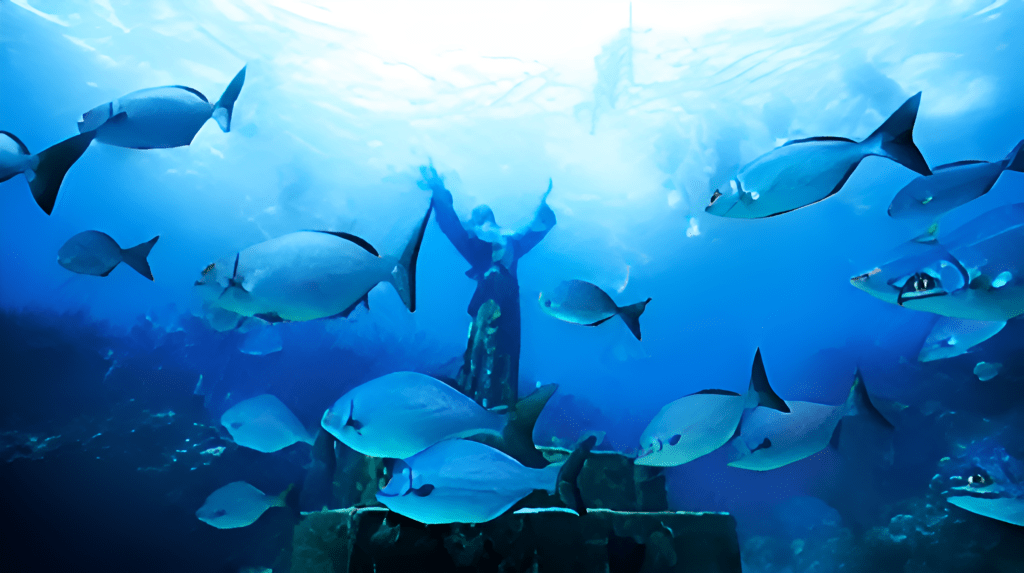Introduction
John Pennekamp Coral Reef State Park is located in Key Largo, Florida. This park was founded in 1963 as America’s First Underwater Park. This park, which spans over 70 nautical miles, boasts stunning coral reefs, showcases diverse marine life, and supports rich ecosystems.
History
It was named after John D. Pennekamp, a Miami newspaper publisher. He was an outspoken supporter of marine conservation. The creation of the park was a conservation of Florida’s coral reefs. Today, it is a mega-popular spot for eco-tourism and its rich underwater dive sites.
Natural Features
The park is a combination of habitats, including mangroves, seagrass beds, and coral reefs. The world-renowned coral reefs host a diverse variety of corals. Furthermore, these vibrant ecosystems support and nurture essential habitats for marine life. These reefs are critical habitats for a variety of fish and other aquatic life. Underwater is where the vibrancy bursts forth, leaving many visitors wide-eyed and exploring underwater forests full of life.
Coral Reefs
John Pennekamp Coral Reef State Park — These spectacular coral formations are the most famous component of John Pennekamp Amphitheater. The reefs are a haunt to more than 600 fish species, including parrotfish and angelfish. This is a paradise for scuba diving, with astonishing coral formations and marine species working in harmony. To maintain good health conditions in its marine ecosystem, this park’s reefs play a significant role. Additionally, they support biodiversity and protect coastlines from erosion.
Mangrove Forests
Mangroves are an essential habitat within the park. They grow in estuaries and are critical for fish nurseries. To protect shorelines from erosion and storm damage, they actively serve this crucial purpose. The mangrove forests are home to many birds and crustaceans. Visiting these areas gives a view of the intricate coastal ecosystem.
Seagrass Beds
For the well-being of water and to ensure essential habitat for various fish species, seagrass beds are a must. The underwater meadows are the stomping grounds for manatees, sea turtles, and a variety of fish. These organisms play a crucial role in maintaining the parks’ ecological balance, actively cleaning pollutants from our water streams and effectively holding soil in place.
Recreational Activities
Recreation at John Pennekamp Coral Reef State Park: Swimming, fishing, snorkeling, scuba diving, kayaking, paddle boarding. Its crystal clear water and plentiful marine lia are prevalently popular locations for those in search of some underwater fun. Visitors can enjoy guided tours that detail the ecology and marine life of this park.
The park was visited by many snorkeling and scuba diving enthusiasts. All dive sites cater to every level of diving. Rentals, guided dives, and snorkeling tours are available at the park’s dive shops. The experience will allow visitors to be closer to seeing coral reefs in their full beauty.
Kayaking and Canoeing
In the park, visitors can explore mangroves and seagrass beds via kayaking or canoeing. Canoeing on this stunning, calm waterbody allows you to spot wildlife in their natural habitat. Rentals are provided for guest who want to explore on their own.
Wildlife Watching
Spotting wildlife is also a main attraction when in the park. Bird lovers often see herons, egrets, and osprey. The park’s waters regularly showcase dolphins and manatees, and as a result, visitors usually enjoy observing these magnificent creatures. The wide variety of ecosystems creates an endless opportunity for nature lovers to see wildlife up close and personal.
Conservation Efforts
One of the main focuses at John Pennekamp Coral Reef State Park is conservation. The park is heavily involved in preserving marine environments through a number of programs. Groundwork includes coral restoration projects and public education campaigns. To promote the preservation of marine life, these programs actively engage communities and stakeholders.
Coral Restoration
Coral restoration programs seed coral fragments and follow their progress. To restore damage to reefs and increase biodiversity, they actively contribute to restoration efforts. These projects involve volunteers who work to keep up with the natural beauty of the park.
Education Programs
The park offers top educational programs for visitors of all age groups. Additionally, these programs are designed to engage everyone effectively. Programs include marine ecology and conservation, as well as the value of natural resources. Interactive exhibits and guided walks provide valuable insights into the park’s ecosystems while also enhancing visitors’ understanding of its natural environments.

